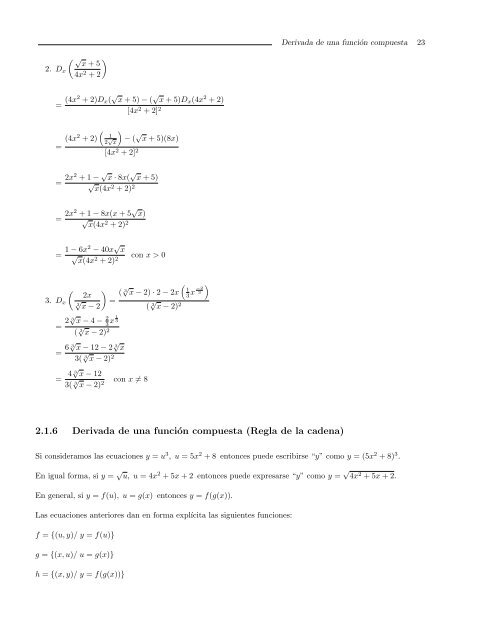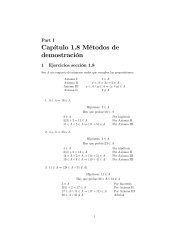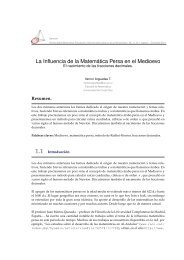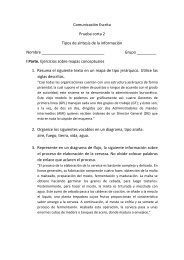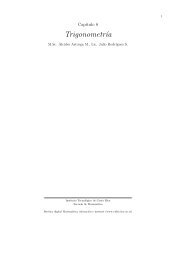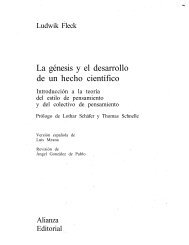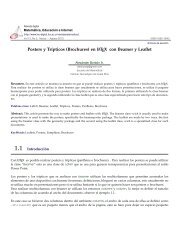Derivada de una función - TEC-Digital
Derivada de una función - TEC-Digital
Derivada de una función - TEC-Digital
You also want an ePaper? Increase the reach of your titles
YUMPU automatically turns print PDFs into web optimized ePapers that Google loves.
2. Dx<br />
√<br />
x + 5<br />
4x2 <br />
+ 2<br />
= (4x2 + 2)Dx( √ x + 5) − ( √ x + 5)Dx(4x 2 + 2)<br />
[4x 2 + 2] 2<br />
=<br />
(4x2 <br />
1 + 2) 2 √ <br />
− ( x<br />
√ x + 5)(8x)<br />
[4x2 + 2] 2<br />
= 2x2 + 1 − √ x · 8x( √ x + 5)<br />
√ x(4x 2 + 2) 2<br />
= 2x2 + 1 − 8x(x + 5 √ x)<br />
√ x(4x 2 + 2) 2<br />
= 1 − 6x2 − 40x √ x<br />
√ x(4x 2 + 2) 2<br />
3. Dx<br />
con x > 0<br />
<br />
2x (<br />
3√ =<br />
x − 2<br />
3√ x − 2) · 2 − 2x<br />
( 3√ x − 2) 2<br />
= 2 3√ x − 4 − 2 1<br />
3x 3<br />
( 3√ x − 2) 2<br />
= 6 3√ x − 12 − 2 3√ x<br />
3( 3√ x − 2) 2<br />
= 4 3√ x − 12<br />
3( 3√ x − 2) 2<br />
con x = 8<br />
1<br />
3<br />
<br />
−2<br />
x 3<br />
2.1.6 <strong>Derivada</strong> <strong>de</strong> <strong>una</strong> <strong>función</strong> compuesta (Regla <strong>de</strong> la ca<strong>de</strong>na)<br />
<strong>Derivada</strong> <strong>de</strong> <strong>una</strong> <strong>función</strong> compuesta 23<br />
Si consi<strong>de</strong>ramos las ecuaciones y = u 3 , u = 5x 2 + 8 entonces pue<strong>de</strong> escribirse “y” como y = (5x 2 + 8) 3 .<br />
En igual forma, si y = √ u, u = 4x 2 + 5x + 2 entonces pue<strong>de</strong> expresarse “y” como y = √ 4x 2 + 5x + 2.<br />
En general, si y = f(u), u = g(x) entonces y = f(g(x)).<br />
Las ecuaciones anteriores dan en forma explícita las siguientes funciones:<br />
f = {(u, y)/ y = f(u)}<br />
g = {(x, u)/ u = g(x)}<br />
h = {(x, y)/ y = f(g(x))}


